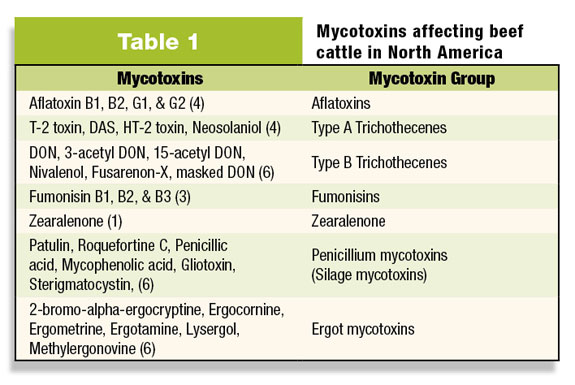Editor’s note: The article is the first of a two-part series. Click here to read the second part.
When you think about August, the first thing that comes to mind is the three letter word “hot.” While it is hot and dry in most regions right now, if you were to ask a true optimist what August means he would respond, with a sparkle in his eye, something along the lines of the following.
August begins the 30-plus day countdown before county fair starts; the fall-calving mommas are starting to really belly down in the last trimester, which means calving season is fast approaching – and final preparations are being made to begin harvest season for many producers.
No matter what your definition of August is, cattlemen from each corner of the U.S. can agree on two things at the end of the day: productivity and profitability.
Some might blame the extreme heat for their herd’s slow weight gain and lack of feed efficiency when, in many instances, performance comes down to the forages and feeds being fed to cattle.
There are many nutritional differences in feeds, but one other fact remains: All feeds contain fungal spores.
When the temperature and humidity are right, this creates perfect conditions for these spores to grow and multiply which, in turn, creates mold.
Many molds found in feeds are not toxic but some varieties produce mycotoxins that can reduce animal health and productivity.
What are mycotoxins?
Mycotoxins are harmful toxins produced by molds and they can create a variety of health problems for animals depending on species and type of toxins identified.
Regulatory/advisory limits are identified for some individual mycotoxins; however, mycotoxin effects are synergistic in nature, meaning that combinations of low levels of mycotoxins can have a greater negative impact than a high level of a single toxin.
Where are they?
Mycotoxins are produced in the field as well as during storage of feedstuffs. Fusarium mycotoxins are predominantly produced in the field, depending on the growing conditions.
Aspergillus mycotoxins such as aflatoxins can be produced both in the field and during storage.
Silage mycotoxin concentrations tend to be higher in horizontal storage methods, such as bunker silos and feed piles, as opposed to plastic storage systems.
This is in line with the amount of oxygen that can penetrate the structures. However, if there is any damage to the plastic covers this can be just as harmful.
Some molds such as penicillium can grow even if a small amount of oxygen enters silage bunks. The longer the silage is stored, the greater the opportunity for significant fungus growth and mycotoxin contamination.
Silages and stored feeds are perfect energy sources for the growth of molds. Producers, nutritionists and veterinarians alike should be aware of storage molds, particularly the penicillium species, because of their ability to impact rumen function.
Running a mold and identification test can be a useful way to identify the presence of molds in feeds.
More than 500 mycotoxins have been identified to date, but only a few can be tested commercially. In a recent study, 128 samples from the 2011 grain harvest from different regions of the U.S. were analyzed for the presence of 32 mycotoxins.
Only eight samples out of 128 tested presented non-detectable values (below limit of detection) for all the mycotoxins tested, giving 94 percent detection.

The major criteria for selecting these mycotoxins include their prevalence in the field as well as their established toxicological impact on beef cattle. (Table 1)
What are the effects of mycotoxins?
In the industry, there has been a general misconception that cattle are resistant to mycotoxins.
However, the research over the last decade has shown that cattle are susceptible to various mycotoxins such as aflatoxins, T-2 toxin, deoxynivalenol, zearalenone and several penicillium mycotoxins.
Mycotoxins can have acute, as well as chronic, effects on cattle. Good examples of acute effects include the possible role of T-2 toxin in hemorrhagic bowel syndrome (HBS) and the role of ergot alkaloids (poisonous nitrogen-containing compounds) in foot rot and abortions.
Though the mortality rate is high in acute mycotoxin cases, this seldom happens in the field. Chronic effects of mycotoxins, on the other hand, are common and are the result of exposure of animals to low levels of mycotoxins over an extended period.
Some of the chronic symptoms include slower growth rates, inconsistent manure, increased somatic cell counts and poor conception rates.
Am I feeding mycotoxin-infected forages and byproducts?
Proactively testing forages and feed can help with the decision whether or not to use such feedstuffs.
Mycotoxins usually occur in “hot spots,” meaning they are not evenly distributed within feeds or forages. When taking samples to test for mycotoxin toxicity levels, it is important to take a number of subsamples to make a composite sample of the batch of grain or forages being tested.
Thoroughly mix the subsamples together to provide a fair homogeneous offering for analysis. It is also important to understand that a negative result does not guarantee the absence of mycotoxins.
So, as you are checking cows this evening or busy rinsing show calves twice a day in the show barn, take a step back and monitor your herd’s silent signals.
Observe weight loss and other chronic symptoms in your cattle to avoid productivity and feed efficiency losses in your beef cattle herd, which can be caused by mycotoxicoses.
Click here for more information on mycotoxins, or call the Mycotoxin Hotline toll-free at 866-322-3484.
References omitted due to space but are available upon request. Click here to email an editor.







